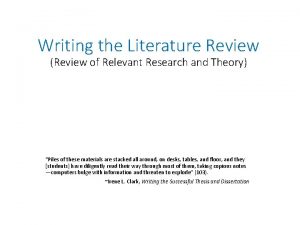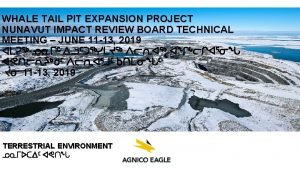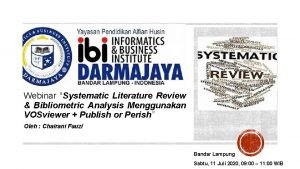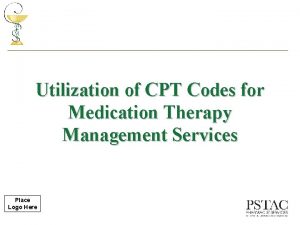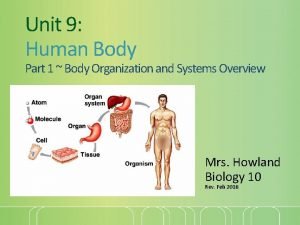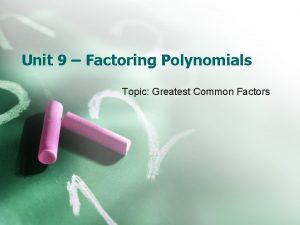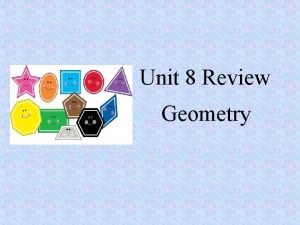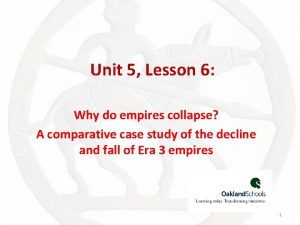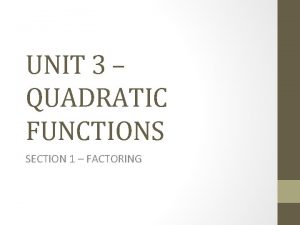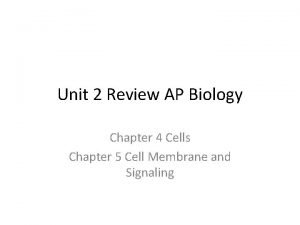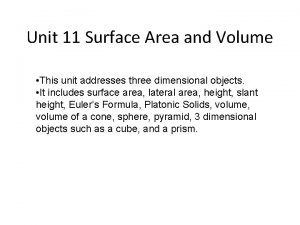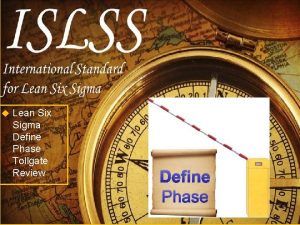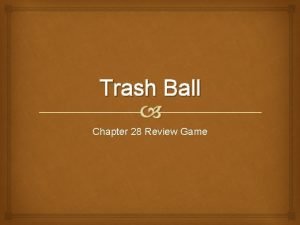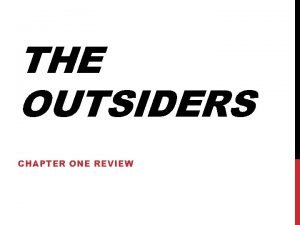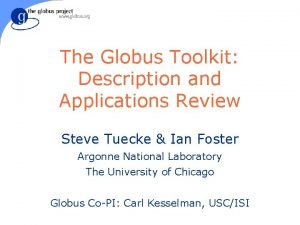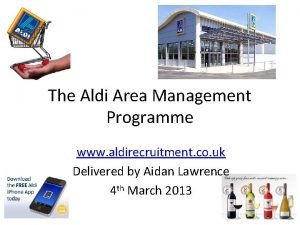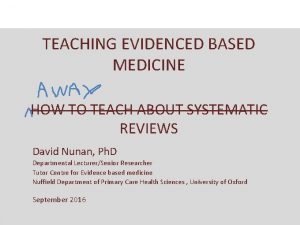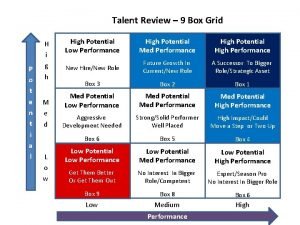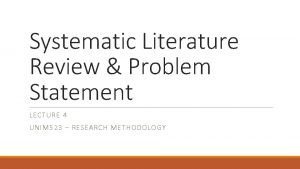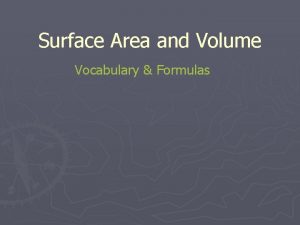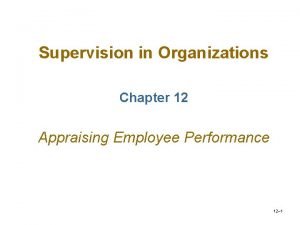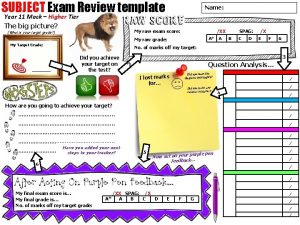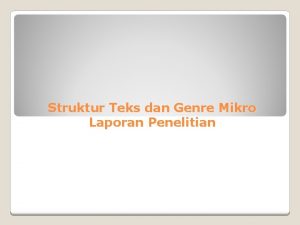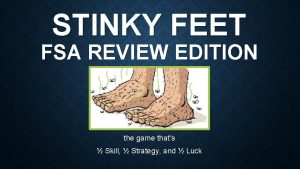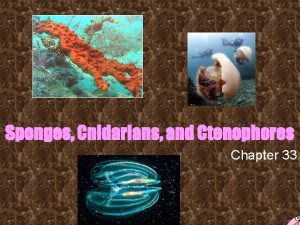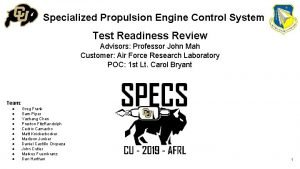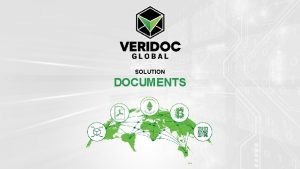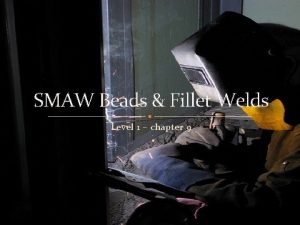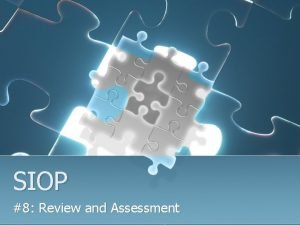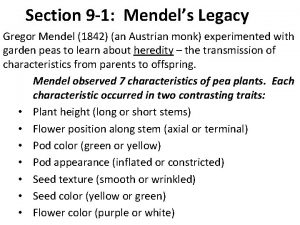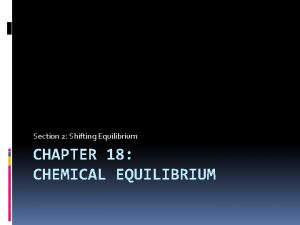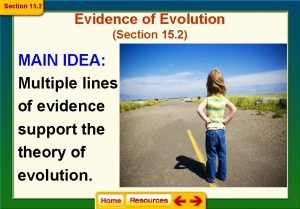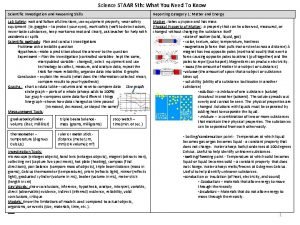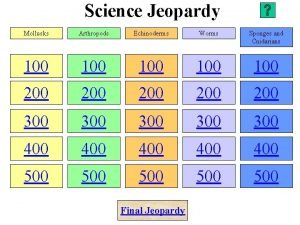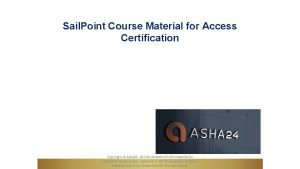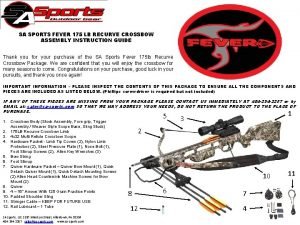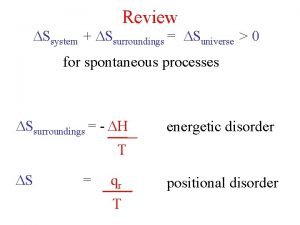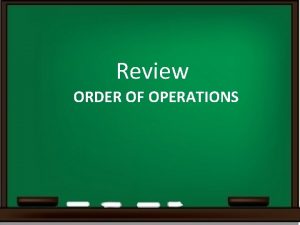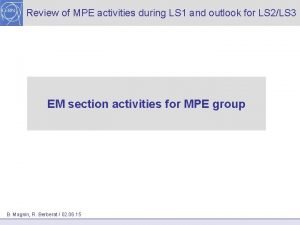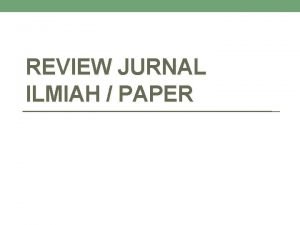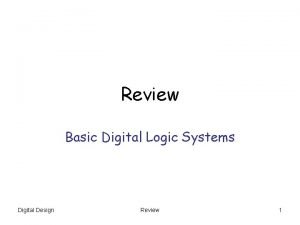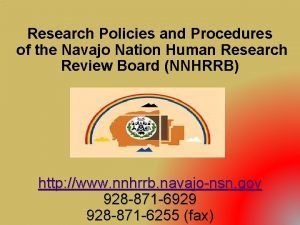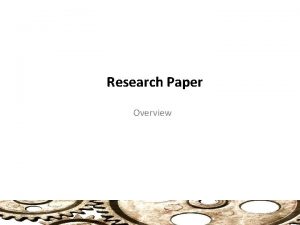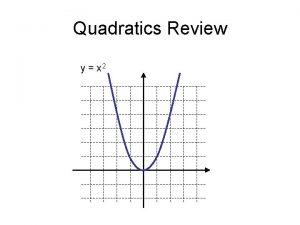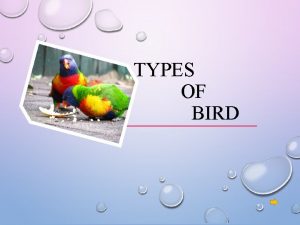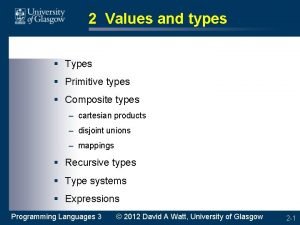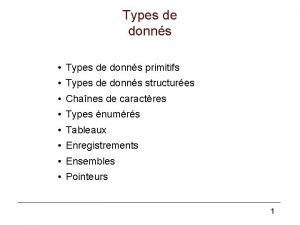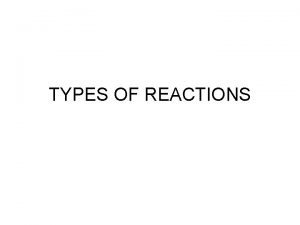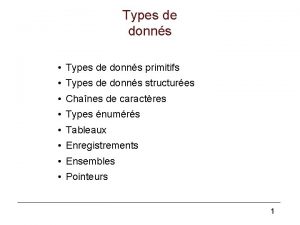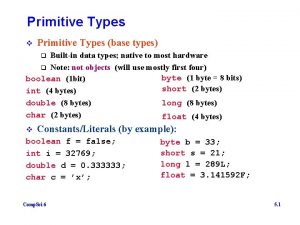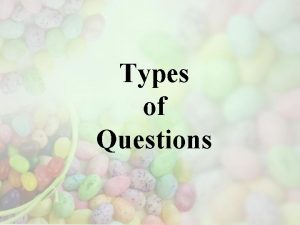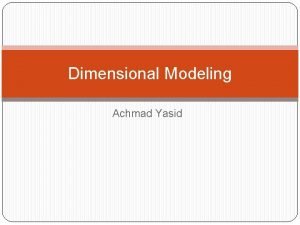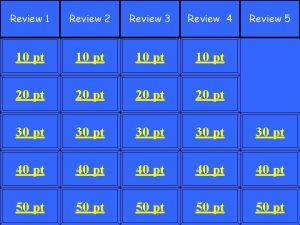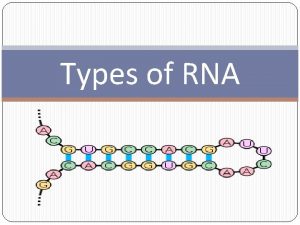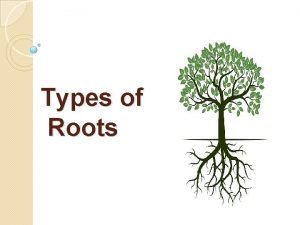1 2 3 4 Review What types of


















































































































- Slides: 114

1. 2. 3. 4. Review What types of food do herbivores eat, What are nutritional symbionts Relate Cause and Effect How might a corral be affected if all its symbiotic algae died Review what are two types of digestion animals use to break down and absorb food Compare and Contrast What is a major structural difference between gastrovascular cavities and digestive tracts

CH 27 ANIMAL SYSTEMS I 27. 1 Feeding and Digestion

What and how you eat depends on how you look and act.

Filter Feeders Catch algae and small animals by using modified gills or other structures as nets that filter food items out of water Barnacles to blue whales.

Detritivores Feed on detritus, often obtaining extra nutrients from the bacteria, algae, and other microorganisms that grow on and around it Earthworms to cleaner shrimp.

Carnivores Eat other animals Wolves or orcas Use teeth, claws, and speed or stealthy hunting tactics to bring down prey Carnivorous invertebrates Cnidarians paralyze prey with poison-tipped darts Spiders immobilize their victims with venomous fangs.

Herbivores Eat plants or parts of plants Locusts to cattle May specialize in eating seeds or fruits.

Symbionts Organisms involved in a symbiosis.

Parasitic Symbionts Parasites live within or on a host organism Feed on tissues or on blood and other body fluids Can cause serious diseases.

Mutualistic Symbionts Reef-building corals depend on symbiotic algae that live within their tissues for most of their energy Algae gain nutrition from the corals’ wastes and protection from algae eaters.

Intracellular Digestion Digest food inside specialized cells that pass nutrients to other cells by diffusion.

Extracellular Digestion Process in which food is broken down outside cells in a digestive system and is then absorbed Most common in more complex animals.

Gastrovascular Cavities Interior body space whose tissues carry out digestive and circulatory functions Single opening through which they both ingest food and expel wastes.

Cells lining the gastrovascular cavity secrete enzymes and absorb digested food Other cells surround food particles and digest them in vacuoles Nutrients then transported throughout body.

Digestive Tracts Digest food in a tube which has two openings Food moves in one direction Entering the body through the mouth Wastes leave through the anus Many invertebrates and all vertebrates.

Digestive Tracts Specialized structures perform different tasks as food passes through them Mouth secretes digestive enzymes that start the chemical digestion of food Specialized mouthparts or a muscular organ called a gizzard breaks food into small pieces.

Digestive Tracts Chemical digestion begins or continues in a stomach that secretes digestive enzymes Chemical breakdown continues in the intestines, sometimes aided by secretions from other organs Intestines also absorb the nutrients released by digestion.

Solid Waste Disposal Some indigestible material will always be left Solid wastes, or feces, are expelled through the single digestive opening, or anus.

Eating Meat Have sharp teeth that grab, tear, and slice food like knives and scissors would Jaw bones and muscles are adapted for up-anddown movements that chop meat into small pieces.

Eating Plant Leaves Need to tear plant cell walls and expose their contents Mouthparts that grind and pulverize leaf tissues.

Carnivors typically have short digestive tracts that produce fast-acting, meat-digesting enzymes.

No animal produces digestive enzymes that can break down the cellulose in plant tissue Cattle have a pouchlike extension of their stomach called a rumen, in which symbiotic bacteria digest cellulose.

Pieces of boiled egg white are placed in a test tube with hydrochloric acid, water, and pepsin (enzyme that digests protein) 1. Describe the trend in the amount of protein digested over time 2. About how many hours did it take for half the protein to be digested 3. How would you expect the rate of meat digestion to differ in an animal that had less pepsin

CH 27 ANIMAL SYSTEMS I 27. 2 Respiration

Gas Diffusion and Membranes Gases diffuse most efficiently across a thin, moist membrane that is permeable to those gases Larger the surface area membrane, the more diffusion that can occur.

Requirements for Respiration Large surface area of moist, selectively permeable membrane Difference in relative concentrations of oxygen and carbon dioxide on either side of the respiratory membrane.

Respiratory Surfaces of Aquatic Animals Some aquatic invertebrates and a few chordates rely on diffusion of oxygen and carbon dioxide through their outer body covering.

Respiratory Surfaces of Aquatic Animals Many aquatic invertebrates and most aquatic chordates exchange gases through gills Gills Feathery structures that expose a large surface area of thin, selectively permeable membrane to water Capillaries Network of tiny, thin-walled blood vessels.

Respiratory Surfaces of Aquatic Animals May actively pump water over their gills as blood flows through inside Gas exchange occurs as water passes over the gills.

Respiratory Surfaces of Aquatic Animals Lungs Organs that exchange oxygen and carbon dioxide between blood and air Aquatic reptiles and aquatic mammals, must hold their breath underwater.

Respiratory Surfaces in Land Invertebrates Wide variety of respiratory structures Respire across their skin Mantle cavity Book lungs Tracheal tubes.

Book Lungs Which are made of parallel, sheetlike layers of thin tissues containing blood vessels.

Tracheal Tubes Air enters and leaves the system through openings in the body surface called spiracles Most invertebrates.

Lung Structure in Vertebrates Lung structure in terrestrial vertebrates varies Processes of inhaling and exhaling are similar

Inhaling brings oxygen-rich air through the trachea (airway) into the lungs Oxygen diffuses into the blood through lung capillaries Carbon dioxide diffuses out of capillaries into the lungs Oxygen-poor air is then exhaled.

Amphibian, Reptilian, and Mammalian Lungs Typical amphibian lung is little more than a sac with ridges.

Amphibian, Reptilian, and Mammalian Lungs Reptilian lungs are divided into chambers Increase the surface area for gas exchange.

Amphibian, Reptilian, and Mammalian Lungs Mammalian lungs branch extensively Filled with Alveoli.

Alveoli Provide enormous surface area for gas exchange Enable mammals to take in the large amounts of oxygen required by their high metabolic rates.

Bird Lungs Air flows mostly in only one direction, so no stale air gets trapped in the system Gas exchange surfaces are continuously in contact with fresh air Highly efficient Enables flight, at high altitude for extended time.

CH 27 ANIMAL SYSTEMS I 27. 3 Circulation

Heart Hollow, muscular organ that pumps blood around the body May have one or more May be part of either an open or a closed circulatory system.

Open Circulatory Systems Blood is only partially contained within a system of blood vessels Arthropods and most mollusks have open circulatory systems.

One or more hearts or heartlike organs pump blood through vessels Empty into a system of sinuses (spongy cavities) where blood comes into direct contact with body tissues.

Blood then collects in another set of sinuses and makes its way back to the heart.

Closed Circulatory Systems Blood circulates entirely within blood vessels that extend throughout the body Many larger, more active invertebrates, including annelids and some mollusks, and all vertebrates have closed circulatory systems.

Closed Circulatory Systems Heart or heartlike organ forces blood through vessels Nutrients and oxygen reach body tissues by diffusing across thin walls of capillaries Pumped at higher pressure and circulates more efficiently.

Single-Loop Circulation Single pump that forces blood around the body in one direction Most vertebrates with gills.

Single-Loop Circulation Atrium Receives blood from the body Ventricle Pumps blood out of the heart and to the gills Oxygen-rich blood travels from the gills to the rest of the body Oxygen-poor blood then returns to the atrium.

Double-Loop Circulation Two-pump circulatory system Most vertebrates that use lungs First loop is powered by one side of the heart Forces oxygen-poor blood from the heart to the lungs.

Double-Loop Circulation Blood picks up oxygen and drops off carbon dioxide in the lungs Returns to the heart Other side of the heart pumps oxygen-rich blood through the second circulatory loop to the rest of the body.

Amphibian hearts usually have three chambers: two atria and one ventricle Left atrium receives oxygen-rich blood from the lungs Right atrium receives oxygen-poor blood from the body Both atria empty into the ventricle.

Reptilian hearts typically have three chambers: two atria and one ventricle Have a partial partition in their ventricle Less mixing of oxygen-rich and oxygen-poor blood than in amphibians.

Four-chambered hearts are actually two separate pumps working next to one another Partitions evolved that divided the original two chambers into four, transforming one pump into two parallel pumps.

CH 27 ANIMAL SYSTEMS I 27. 4 Excretion

The Ammonia Problem Breakdown of proteins by cells releases a nitrogencontaining waste: ammonia Ammonia is poisonous Moderate concentrations of ammonia can kill most cells.

Excretion Elimination of metabolic wastes, such as ammonia Small animals in wet environments get rid of ammonia by allowing it to diffuse out of their body fluids across their skin Most larger animals have excretory systems that process ammonia and eliminate it from the body.

Animals that cannot dispose of ammonia continuously have evolved ways to store nitrogenous wastes until they can be eliminated.

Storing Nitrogenous Wastes Ammonia itself cannot be stored in body fluids because it is too toxic Insects, reptiles, and birds convert ammonia into a sticky white compound called uric acid Much less toxic than ammonia and is less soluble in water.

Mammals and some amphibians convert ammonia to urea Urea is less toxic than ammonia Is highly soluble in water.

Maintaining Water Balance Excretory systems are extremely important in maintaining the proper balance of water in blood and body tissues May also excrete excess water or have to conserve water.

Kidneys Separate wastes and excess water from blood to form urine Pump ions from salt to create osmotic gradients Water then “follows” those ions passively by osmosis Usually cannot excrete excess salt.

Freshwater Animals Freshwater invertebrates lose ammonia to their environment by simple diffusion across their skin.

Freshwater fishes and amphibians eliminate ammonia by diffusion across the same gill membranes they use for respiration.

Bodies of freshwater animals, such as fishes, contain a higher concentration of salt than the water they live in.

Water moves into their bodies by osmosis Salt diffuses out.

Freshwater fish excrete lots of watery urine Don't drink water Actively pump salt in across their gills.

Saltwater Animals Typically release ammonia by diffusion across their body surfaces or gill membranes.

Many marine invertebrates have body fluids with water concentrations similar to that of the seawater around them.

Many saltwater animals, such as fishes, contain a lower concentration of salt than the water they live in.

Lose water through osmosis, and salt diffuses in.

Saltwater fish conserve water by producing very little concentrated urine Drink water Actively pump salt out across their gills.

Excretion in Terrestrial Animals Land animals can lose large amounts of water from respiratory membranes that must be kept moist Must eliminate nitrogenous wastes in ways that require disposing of water.

Terrestrial Invertebrates Produce urine in nephridia Nephridia Tubelike excretory structures that filter body fluid.

Terrestrial Invertebrates Body fluid enters the nephridia through nephrostomes and becomes more concentrated as it moves along the tubes Urine leaves the body through excretory pores.

Terrestrial Invertebrates Insects and arachnids convert ammonia into uric acid Malpighian tubules Absorb uric acid from body fluids Concentrate the wastes and add them to digestive wastes.

Water is absorbed from wastes Crystals form a thick paste which leaves the body through the anus Paste contains little water Minimizes water loss.

Terrestrial Vertebrates Mammals and land amphibians convert ammonia into urea Excreted in urine by the kidneys.

Reptiles and birds convert ammonia into uric acid Passed through ducts into a cavity that also receives digestive wastes from the gut Walls of cavity absorb water Uric acid separates as thick, milky-white paste recognized as “bird droppings. ”

Most vertebrate kidneys cannot excrete concentrated salt Most vertebrates cannot survive by drinking seawater All that extra salt would overwhelm the kidneys, and the animal would die of dehydration.

CH 28 ANIMAL SYSTEMS II 28. 3 Reproduction

Asexual Reproduction Many invertebrates and a few chordates Requires only one parent Can reproduce rapidly Lack genetic diversity.

Types of Asexual Reproduction Divide in two Budding Parthenogenesis Females lay eggs that develop without being fertilized by a male.

Sexual Reproduction Involves meiosis, creates gametes Male and female gamete join to create zygote Genetic diversity Requires two individuals of different sexes Greater needs.

Most animal species that reproduce sexually have individuals that are either male or female Some species are hermaphrodites Some species switch sexes.

Reproductive Cycles Some invertebrates have life cycles that alternate between sexual and asexual reproduction.

Blood flukes mature in the body of an infected person Reproduce sexually and release embryos that pass out of the body in feces Embryos develop into larvae and infect snails and reproduce asexually Larvae infect people.

Jellyfish Aurelia polyps produce medusas asexually by budding.

Medusas reproduce sexually by producing eggs and sperm that are released into the water.

After fertilization, the resulting zygote grows into a free-swimming larva.

Larva eventually attaches to a hard surface and develops into a polyp continuing the cycle.

Internal Fertilization Eggs are fertilized inside the body of the eggproducing individual Many aquatic and all terrestrial animals Sperm may taken in from surrounding water, be gathered by the female, or deposited in side the female.

External Fertilization Eggs are fertilized outside the body of the eggproducing individual Aquatic invertebrate and vertebrates.

Development and Growth After fertilization, the zygote divides through mitosis and differentiates Development occurs under different circumstances in different species Care and protection given to developing embryos also varies widely.

Animals may be oviparous, ovoviviparous, or viviparous.

Oviparous Embryos develop in eggs outside the parents’ bodies Most invertebrates, many fishes and amphibians, most reptiles, all birds, and a few mammals.

Ovoviviparous Embryos develop within the mother’s body, but depend entirely on the yolk sac of their eggs Young do not receive any additional nutrients from the mother Guppies and some shark species.

Viviparous Embryos obtain nutrients from the mother’s body during development Most mammals and some insects, sharks, bony fishes, amphibians, and reptiles.

Viviparous Young are nourished by secretions produced in the mother’s reproductive tract in insects, and in some sharks and amphibians.

Viviparous Placenta Specialized organ that enables exchange of respiratory gases, nutrients, and wastes between the mother and her developing young In placental mammals.

Most newborn mammals and newly hatched birds and reptiles look a lot like miniature adults.

As invertebrates, nonvertebrate chordates, fishes, and amphibians develop, they undergo metamorphosis Metamorphosis Developmental process that leads to dramatic changes in shape and form.

Aquatic Invertebrates Have a larval stage that looks nothing like an adult Swim or drift in open water before undergoing metamorphosis and assuming their adult form May have multiple larval stages.

Terrestrial Invertebrates Some undergo gradual or incomplete metamorphosis Nymph Immature forms that resemble adults Lack functional sexual organs and some adult structures Molt several times and gradually acquire adult structures.

Some undergo complete metamorphosis Larvae look nothing like their parents, and they feed in different ways Pupa Stage in which an insect larva develops into an adult Controlled by amount of juvenile hormone produced.

Care of Offspring Species that provide intensive or long-term parental care give birth to fewer young than do species that offer no parental care Type and amount of care varies greatly.

The Amniotic Egg Provides a protected environment for an embryo to develop out of water One of most important vertebrate adaptations to life on land Reptiles, birds, and a few mammals.

Amnion Fluid-filled sac that surrounds and cushions the developing embryo.

Chorion Regulates the transport of oxygen from the surface of the egg to the embryo and the transport of carbon dioxide in the opposite direction.

Yolk sac Contains nutrient-rich food supply for the embryo Allantois Stores waste produced by the embryo Later fuses with the chorion.

Mammal Adaptations The three groups of mammals: Monotremes Marsupials Placentals All nourish their young with mother’s milk.

Monotremes Lay soft-shelled, amniotic eggs that are incubated outside her body Young are nourished by milk produced by the mother.

Marsupials Bear live young that usually complete their development in an external pouch Young spend months attached to a nipple drinking milk and growing inside.

Placentals Nourished through a placenta before they are born and by their mother’s milk after they are born Born at a fairly advanced stage of development.
 Chapter review motion part a vocabulary review answer key
Chapter review motion part a vocabulary review answer key Uncontrollable spending ap gov
Uncontrollable spending ap gov Narrative review vs systematic review
Narrative review vs systematic review Example of inclusion and exclusion criteria
Example of inclusion and exclusion criteria Narrative review vs systematic review
Narrative review vs systematic review Theoretical and conceptual framework in research example
Theoretical and conceptual framework in research example Sentence types review
Sentence types review Quarterly business review examples
Quarterly business review examples Period 2 apush review
Period 2 apush review Marbury v madison apush significance
Marbury v madison apush significance Review of literature means
Review of literature means 8 importance of literature review
8 importance of literature review Killer paper
Killer paper Structure of review writing
Structure of review writing Order literature review
Order literature review Time 4 writing
Time 4 writing Ucl critical review
Ucl critical review World history spring final exam review answers
World history spring final exam review answers World history final exam study guide
World history final exam study guide What is a refereed journal?
What is a refereed journal? Nunavut impact review board
Nunavut impact review board Vosviewer alternative
Vosviewer alternative Aaa new deal logo
Aaa new deal logo Va studies 4th grade sol review
Va studies 4th grade sol review Cpt code 99606
Cpt code 99606 Florida us history eoc review
Florida us history eoc review Us history regents review
Us history regents review Unit 9 human body systems
Unit 9 human body systems Unit 9 factoring review answers
Unit 9 factoring review answers Geometry unit 8 test
Geometry unit 8 test Unit 8 exponential and logarithmic functions
Unit 8 exponential and logarithmic functions Unit 7 lesson 5 drivers ed
Unit 7 lesson 5 drivers ed Electric forces and fields concept review
Electric forces and fields concept review World history unit 5 lesson 6
World history unit 5 lesson 6 Pbs eoc review
Pbs eoc review Review packet section 1 factoring
Review packet section 1 factoring Ap biology chapter 4 review
Ap biology chapter 4 review Unit 11 review area and volume
Unit 11 review area and volume Who helped build the transcontinental railroad
Who helped build the transcontinental railroad Us history eoc review notebook
Us history eoc review notebook World power era eoc blitz review
World power era eoc blitz review Tollgate definition
Tollgate definition Trigonometric ratios maze
Trigonometric ratios maze Trash ball game
Trash ball game Chapter 6 to kill a mockingbird
Chapter 6 to kill a mockingbird Chemistry semester 2 review unit 12 thermochemistry
Chemistry semester 2 review unit 12 thermochemistry Khubris
Khubris The outsiders chapter review
The outsiders chapter review Exercise 42 anatomy of the reproductive system
Exercise 42 anatomy of the reproductive system Freewrite review
Freewrite review Opqrsta
Opqrsta Managergram review
Managergram review Thomas putnam character traits
Thomas putnam character traits Aldirecruitment.co.uk
Aldirecruitment.co.uk Us history staar eoc review
Us history staar eoc review Logarithms test review
Logarithms test review Qfas systematic review
Qfas systematic review 9 box talent review
9 box talent review Information systems maintenance
Information systems maintenance Example of statement of the problem
Example of statement of the problem Area and volume vocabulary review crossword
Area and volume vocabulary review crossword Important amendments apush
Important amendments apush Absoluteessays.com reviews
Absoluteessays.com reviews Subway server
Subway server Exam review template
Exam review template How to write a peer review for college
How to write a peer review for college Peer review examples for students
Peer review examples for students Stuart little book review
Stuart little book review Struktur teks pada laporan penelitian
Struktur teks pada laporan penelitian Strategy quant
Strategy quant Edwardtesol
Edwardtesol Fsa writing review jeopardy
Fsa writing review jeopardy The teapot dome scandal centered around *
The teapot dome scandal centered around * Https://play.kahoot.
Https://play.kahoot. Section 33-1 review porifera
Section 33-1 review porifera Test readiness review
Test readiness review Spanish 2 final exam practice test
Spanish 2 final exam practice test Spanish 1 review packet
Spanish 1 review packet Veridoc global review
Veridoc global review Snakes in suit
Snakes in suit Procedure of stringer bead in flat position
Procedure of stringer bead in flat position Siop review and assessment
Siop review and assessment Restoring force physics
Restoring force physics Shropshire local plan review
Shropshire local plan review Section 9-1 mendels legacy
Section 9-1 mendels legacy Chapter 18 review chemical equilibrium section 2 answer key
Chapter 18 review chemical equilibrium section 2 answer key Evidence of evolution
Evidence of evolution Reporting category 3 earth and space
Reporting category 3 earth and space Chapter 27 mollusks and segmented worms answer key
Chapter 27 mollusks and segmented worms answer key When to use dashes sat
When to use dashes sat Asha24 review
Asha24 review Sa sports fever
Sa sports fever Romeo and juliet test with answer key
Romeo and juliet test with answer key Climax of romeo and juliet
Climax of romeo and juliet Whats a good review to write
Whats a good review to write Suniverse reviews
Suniverse reviews Pemdas hopscotch
Pemdas hopscotch Mpe and cre review
Mpe and cre review Review of factoring techniques
Review of factoring techniques Shapiro experiment
Shapiro experiment Multiplying and dividing integers jeopardy
Multiplying and dividing integers jeopardy Contoh paper review
Contoh paper review Pltw human body systems final exam
Pltw human body systems final exam Prezentare de blog
Prezentare de blog Bubble matching digital logic
Bubble matching digital logic Navajo irb
Navajo irb Sots meaning in research
Sots meaning in research Lab practical review earth science
Lab practical review earth science Godswork ai reviews
Godswork ai reviews Physics review letter
Physics review letter Quick grammar review
Quick grammar review Quarterly business review templates
Quarterly business review templates Quadratics review
Quadratics review Chapter 18 psychological disorders review worksheet
Chapter 18 psychological disorders review worksheet Review jurnal psikologi
Review jurnal psikologi










